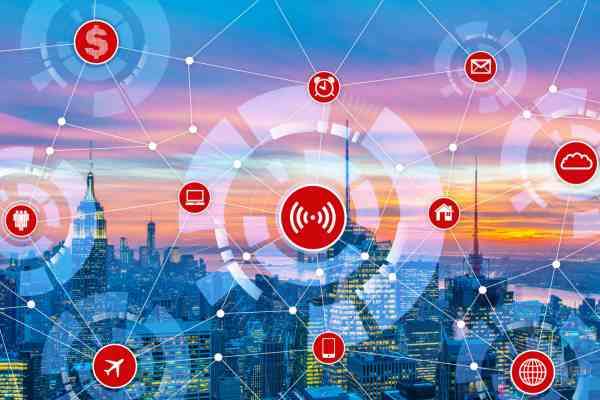Published on the 18/07/2018 | Written by Jonathan Cotton

New research – not to mention a slew of new deals – shows IoT tech finally justifying its ‘next-big-thing’ reputation…
The figures are well and truly in, with IDC predicting IoT spending will experience a compound annual growth rate of 13.6 percent, to reach a staggering worldwide total of US$1.2 trillion within the next five years.
The market intelligence firm’s new report, Worldwide Semiannual Internet of Things Spending Guide, says that IoT, powered by the rapid expansion of analytics software cloud technologies – especially over the transport and manufacturing sectors – is about to reach “broad-based critical mass” as innovative offerings continue to expand.
For the Asia Pacific region specifically (excluding Japan) that means a local spend of around US$291.7 billion for this year alone (up 12.1 percent over last year).
“The IoT market is at a turning point – projects are moving from proof of concept into commercial deployments,” says Carrie MacGillivray, group VP of IoT and mobility.
“Organisations are looking to extend their investment as they scale their projects, driving spending for the hardware, software, services and connectivity required to enable IoT solutions.”
And IDC isn’t the only group predicting big things for IoT things: Juniper Research says that IoT cybersecurity solutions alone – both commercial and domestic – will likely rise 300 percent to top over US$6 billion globally by 2023, as growing business risk and regulatory minimum security standards drive spending.
The research forecasts that the rise of edge computing services that enable near-real-time IoT applications will present additional security challenges, which in turn will drive industry spend. Meanwhile, the need to ensure data reliability will emphasise the need for lifecycle management and device security solutions.
“The interconnected nature of the IoT means that even innocuous devices like the connected fridge can become a threat. Vendors see that risk as low, while little has been done from a regulatory perspective to protect consumers”, says research author Steffen Sorrell.
Those predictions are playing out in the very real deals being struck on both sides of the Tasman: Vodafone’s new partnership with food industry IoT specialist company CCP Technologies will see a critical control point monitoring solution installation at Sydney International Airport, following a successful trial in May.
For the trial, CCP’s smart sensors were installed at cafe Veloce Espresso to help automate the cafe’s refrigeration temperature monitoring processes, simplify record keeping for food safety compliance and provide immediate notification of changes to the refrigeration systems.
“Seamless cold chain monitoring has been a universal food industry goal for over a decade.”
CCP Technologies CEO, Michael White
“With the convergence of cloud, IoT, Blockchain, Big Data [and] AI technologies, we can now begin a new revolution in supply chain management. With significant in-house IoT hardware, firmware, software and Blockchain development resources, we are offering the food industry a farm to fork solution.”
Telco’s love IoT, and one thing’s for sure: there’s a fight brewing for ownership of that early IoT infrastructure. In March Spark New Zealand switched on its “long-range, low-power” network (covering about 60 percent of living/working areas in New Zealand) in hopes of securing its own piece of the rapidly developing commercial IoT pie.
“Our IoT capability is really gathering pace, and now we’ve got this critical mass of coverage we’re able to make the network commercially available,” says Spark’s GM of IoT solutions, Michael Stribling. “This is a real milestone for Spark as we help New Zealand organisations win big in IoT.”
The company says the long-range network is an affordable IoT option, providing sensor tech connectivity “significantly cheaper on average” than when sensors are connected via cellular networks.
Spark has been testing the technology on trial sites for more than a year, with partners from a range of industries, including agriculture, marine and smart buildings. Now that the network has been switched on, it’s banking on buy-in from councils looking to operate and maintain key infrastructure in smarter ways.



























